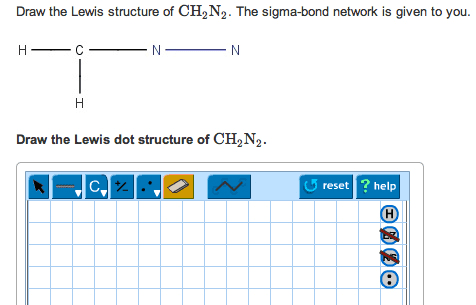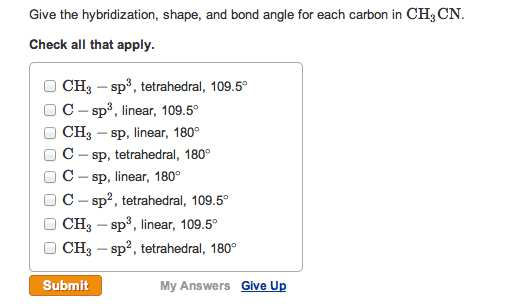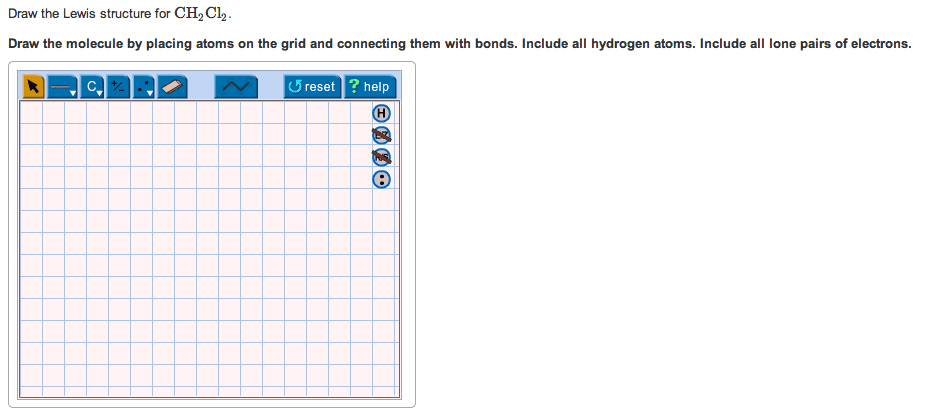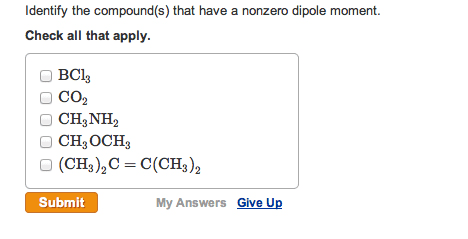CHEM 281 Chapter Notes - Chapter 1: Carbon Tetrachloride, Molecular Geometry, Covalent Bond
Document Summary
Get access


Related textbook solutions
Chemistry: Structure and Properties
Basic Chemistry
Principles of Chemistry Molecular Approach
Chemistry: Structure and Properties
Principles of Chemistry Molecular Approach
Chemistry: A Molecular Approach
Chemistry: A Molecular Approach
Principles of Chemistry: A Molecular Approach
Chemistry: The Central Science
Related Documents
Related Questions
Help!
1)Match each molecule with the hybridization of the chlorine atom.
| A | sp2 |
| B | sp3d |
| C | sp3 |
| D | sp |
| E | sp3d2 |
Match the letter
ClO4-
ClO2
ClO3-
ClO2-
2)Match each electron group arrangement with the corresponding central-atom orbital hybridization.
| A | sp3 |
| B | sp2 |
| C | sp3d2 |
| D | sp3d |
| E | sp |
Match the letter
tetrahedral
octahedral
trigonal planar
trigonal bipyramidal
linear
3)Like several other bonds, carbon-oxygen bonds have lengths and strengths that depend on the bond order. Draw Lewis structures for the following species, and arrange them in order of increasing carbon-oxygen bond length. (Indicate the order with the numbers from the drop-down list, starting with 1 for the compound with the smallest bond length to 5 for the compound with the largest bond length.)
CO32-
HCO3-(H attached to O)
H2CO
CO
CH4O
4)Which have a molecular dipole moment?
Yes, No SF6
Yes No CS2
Yes No PF3
Yes No SF4
Yes No F2




